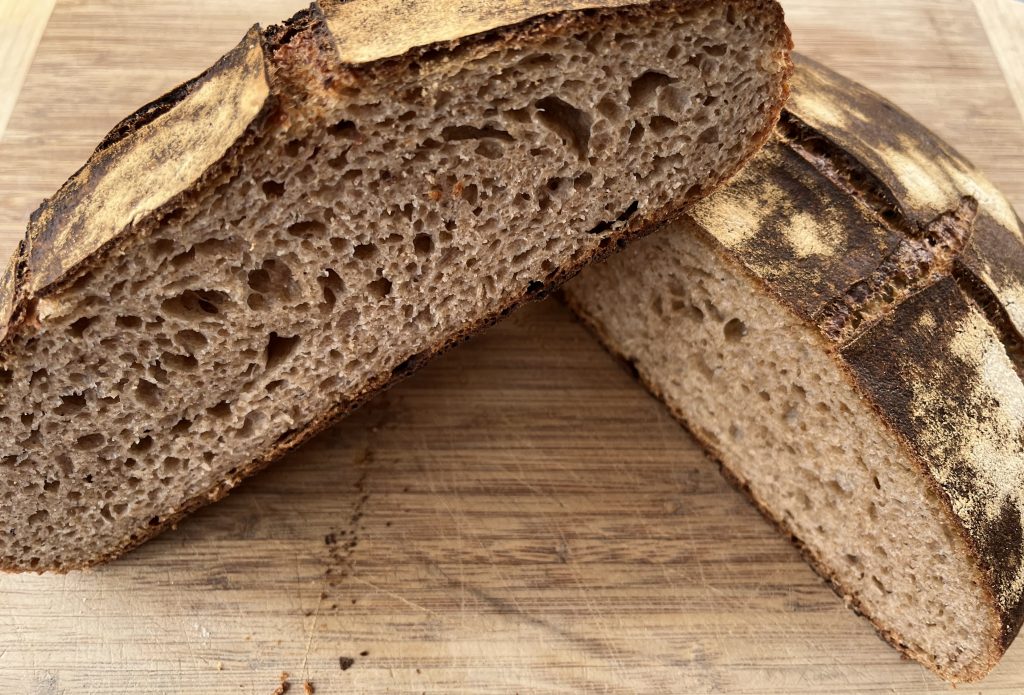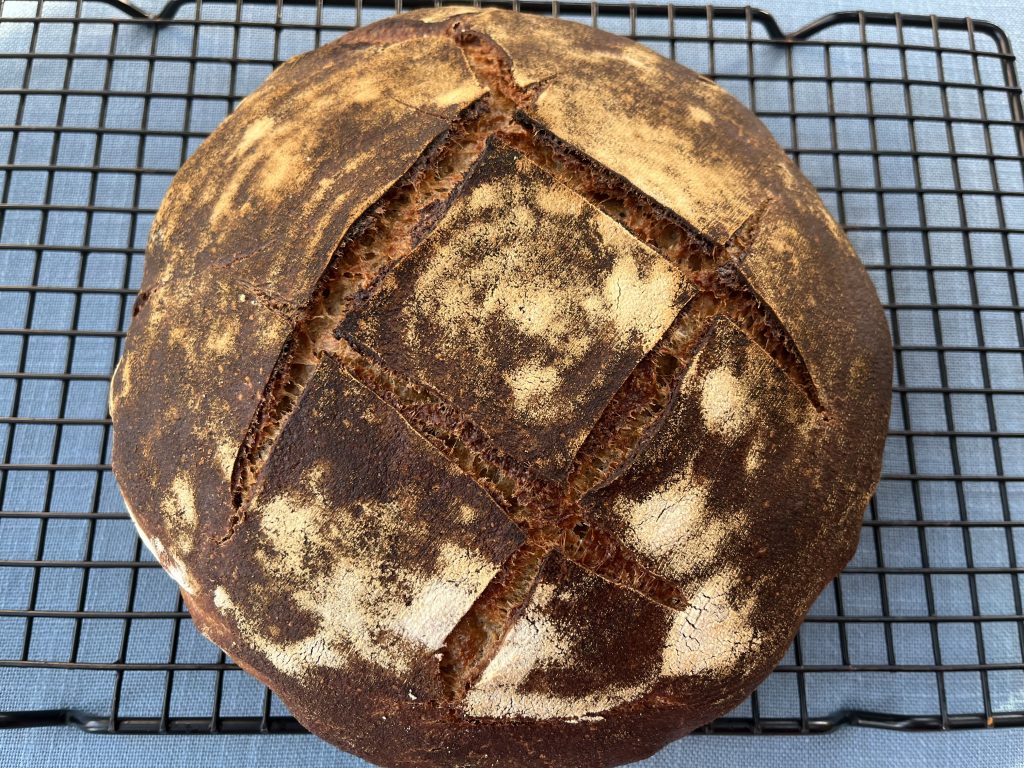
This is an adaptation of a recipe in Peter Reinhart’s Bread Revolution. It uses a heritage wheat, Red Fife, which I got from Anson Mills in South Carolina. It turned out very light, which is an achievement for a 100% whole wheat bread. I also liked that there was no need to discard any dough as I activated and strengthened the sourdough starter. This is a 3-day project: Day 1 – Make levain; Day 2 – Mix and handle the dough; Day 3 – Bake. An unusual thing about this recipe is lightly oiling hands and work surfaces when handling the dough to prevent sticking (and probably also to work a little oil into the dough.)
Levain
11.5 g 50/50 sourdough starter (a bit more is fine)
60 g. water
70 g. Red Fife bread flour (or other whole wheat flour)
Final Dough
Levain
354 g. water
28.5 g. honey
¼ tsp. yeast
461 g. Red Fife bread flour (or other whole wheat flour)
11.5 g. (1-5/8 tsp.) salt
Vegetable oil for oiling surfaces
On Day 1 mix together the levain ingredients. Cover and allow to ferment until doubled, which will probably take around 12 hours.
On the morning of Day 2, put the risen levain into the bowl of a stand mixer. Add the water, honey, and yeast and mix well. Add the flour and salt. Mix with a dough whisk and then with a dough hook until a smooth slightly sticky dough forms, about 4 minutes.
Lightly oil a work surface and a doubling container. Put the dough on the greased work surface. Lightly oil your hands and stretch and fold the dough four times. Form into a ball, put it in the greased doubling container, and cover it. After 40 minutes, stretch and fold it a second time with oiled hands. After another 40 minutes, stretch and fold it a third time. Then let it ferment at room temperature until it nearly doubles, which will take 1-2 hours.
After the dough has proofed, flour a work surface and a banneton with a cloth liner. Ease the dough out of the doubling container and with floured hands form it into a ball. Put it in the banneton seam side up and put the entire container in a clean plastic bag, such as a supermarket produce bag. Tie the bag closed and put the banneton and bag into the refrigerator for an overnight rise.
The next morning, put a heavy oven-proof pot and lid (~5 quart in size) separately into the oven and heat to 450 degrees. After about 30 minutes when everything is preheated, carefully remove the pot from the oven and turn the banneton upside down over the empty pot. (If using the combo cooker, score the top with a lamé or sharp knife in a hashtag pattern.) After the dough falls into the pot, put the lid on and bake for 30 minutes. Remove the lid and bake for another 15-20 minutes until the crust is nicely browned but not burned. Remove the pot from the oven and with a spatula, remove the bread from the pot and allow to cool on a wire rack for at least 30 minutes before cutting it.


